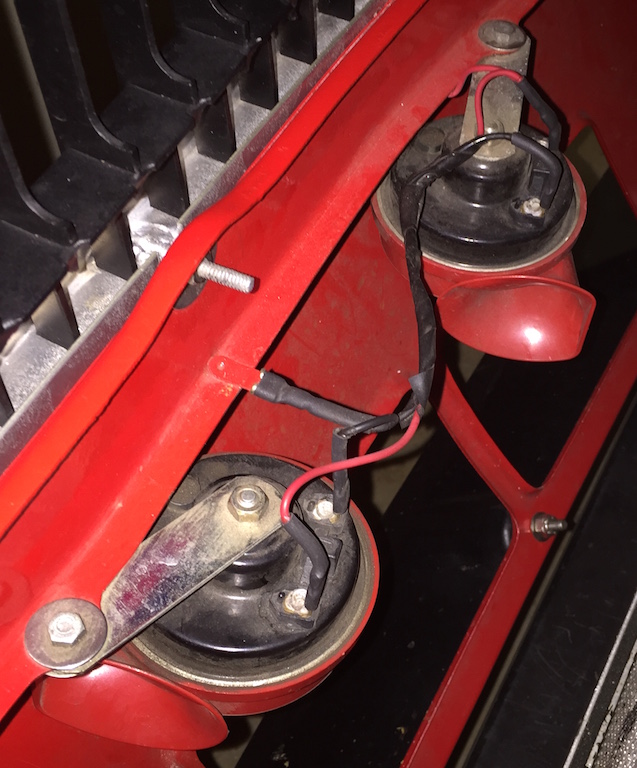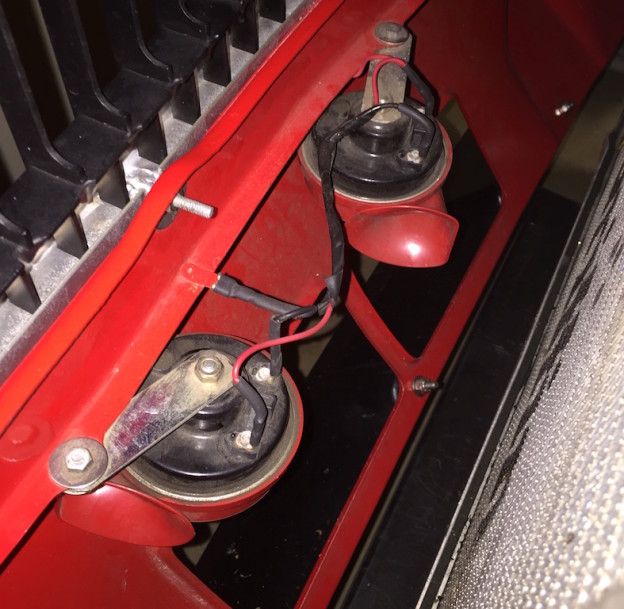A good electrical ground.
How many times have we read about the need of having a good electrical ground in classic cars? Well, I’ve had my fair share of bad electrical grounds through the years and this weekend I fell victim to one.
Weekends are my time to enjoy driving bowtie6 and this past Saturday was no exception. At a red light not far from the house some dipshit was fiddling with his phone instead of paying attention to traffic. I reached down below the dash and tapped the single-pole momentary-on switch that controls the horn…
Nada. Nothing. Horn did not work. At this point I had the default Whiskey-Tango-Foxtrot expression on my face. Damn! Electrical gremlins. Fist thing that pops in my head is failure to have a good electrical ground.
And so, when I get back home I check the fuse panel under the dash that I made and controls all electrical circuits under the bonnet (click here for a more detailed post).
 I checked all fuses and they all passed with no issues. Then, I pulled each one out and made sure all connections were in order. I know, the wiring is a bit busy – but this is rather hard work to do especially in the tight confines of the passenger’s side footwell. I suppose this is what “bespoke” is all about! 😉
I checked all fuses and they all passed with no issues. Then, I pulled each one out and made sure all connections were in order. I know, the wiring is a bit busy – but this is rather hard work to do especially in the tight confines of the passenger’s side footwell. I suppose this is what “bespoke” is all about! 😉
So, next was to go through the main power box. This is located in the engine compartment (click here for more details).
 As you can see, here is the main power distribution block in bowtie6. The six red-capped affairs on the bottom are circuit breakers. They feed hard voltage to each purple relay. In addition there is another fuse panel located behind the relays as well as the engine’s PCM. After careful inspection all this checked out just fine. When I flipped the switch under the dash for the horn, the “horn” relay clicked as expected. Still no horn – rats!
As you can see, here is the main power distribution block in bowtie6. The six red-capped affairs on the bottom are circuit breakers. They feed hard voltage to each purple relay. In addition there is another fuse panel located behind the relays as well as the engine’s PCM. After careful inspection all this checked out just fine. When I flipped the switch under the dash for the horn, the “horn” relay clicked as expected. Still no horn – rats!
Which brings us to the next photo (a closeup of the featured image above):
 The entire circuit governing both horns relies on the ground made by the connector to the body. As it turns out, I pulled this connector and ensured there was no rust. Sure enough, after cleaning the connection, adding a little de-electric grease, and plugging the connector back in place all worked just fine.
The entire circuit governing both horns relies on the ground made by the connector to the body. As it turns out, I pulled this connector and ensured there was no rust. Sure enough, after cleaning the connection, adding a little de-electric grease, and plugging the connector back in place all worked just fine.
And there you have it, the root of all evil… The lack of a good electrical ground.


…should have said in their somewhere “….on the Volvo….” I knew it….just assumed…. LOL
You’re in good company Joe. About once every 6 years (I’ve had to do it twice now) – the horn doesn’t respond to the button. I reach up under the front end and remove/replace the 4 spade connectors (1 hot/1 ground – each horn) on the horns. And then it’s fine. I generally give them a wiggle now just before inspection time each year — which is right around the corner! So this post is a good reminder.
LOL!! Good to know I am not alone!